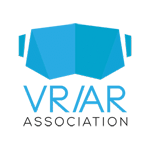
Beginner’s Guide to Mixed Reality: What It Is, How It Works, and Examples
Mixed Reality (MR) uses software and hardware that interacts with your voice and gestures to co-mingle physical and digital worlds. We’ve been working with MR for years and will share how it works, examples, and look at its future.
In this article:
What Is Mixed Reality?
Mixed Reality is a mix of virtual or augmented and actual reality. The technology puts the user in a scene where they will view a 3D object. Users can view MR through smartphones, headsets, and specialized glasses.

Mixed Reality vs. Augmented Reality vs. Virtual Reality
The difference between virtual, augmented, and mixed reality technologies is Virtual Reality (VR) uses a digital environment. Augmented Reality (AR) places virtual objects in a real-world setting. Mixed Reality is a way to interact with digital elements while in the real world.
What Is the Difference Between Mixed Reality and Augmented Reality?
AR adds digital information to a real-world environment. MR lets you interact with digital objects and virtual worlds. For example, an AR app might place a digital dog in your park. With MR, you would also be able to reach out your hand and pet it.
According to Scott Perry, one of the pioneers of Augmented Reality (AR), you can use the technology to manipulate furniture, kitchens and more. See examples of how retailers are using AR.
What Is the Difference Between Mixed Reality and Virtual Reality?
Virtual Reality is an entirely immersive experience where you interact with a world different than your environment. In MR, you can interact with virtual elements, but you’re still aware that you’re in the real world.
Mixed Reality Spectrum
The mixed reality spectrum draws a straight line that starts with reality and ends with digital reality shows all the digital environments in between. Those worlds include AR, augmented virtuality (project real objects into virtual worlds), and VR.
Devices for Mixed Reality

Mixed Reality devices are typically in the form of headset such as the Microsoft HoloLens, Magic Leap One, and the HTC VIVE line.
How Do Mixed Reality Devices Work?
Users will put on a headset that includes a mixed reality platform (typically, Microsoft Windows Mixed Reality) that can run apps. The apps are how you overlay a digital experience in the physical world.
The MR headsets use sensors to bring the experience to life. The sensors ensure the person wearing the headset can interact with what they see on the screen. The devices also include audio and speech features so users can interact with others in their mixed reality world.
What Can You Use Mixed Reality for?
There are countless use cases for mixed reality. The technology has many training applications across many industries. While consumers will benefit from mixed reality’s uses in entertainment, gaming, shopping, and learning new skills.
Examples of Mixed Reality in Entertainment
Mixed Reality expands users’ entertainment. The technology puts users into the mix as a participant. For example, go on a vacation in Mixed Reality whenever you like. Movie companies can literally put you in a film. New implications for MR include:
- Use Mixed Reality to create large holograms of celebrities like John Hamm, who opened the Sundance Film Festival
- Musicians and celebrities can use the technology to make an appearance in your living room.
Examples of Mixed Reality in Gaming
Gaming is constantly evolving with MR software and hardware. Mixed Reality software uses VR programming to provide 3D views of a field. The playing field can be anything you want, such as a building immersed in a 3D world. Other uses:
- Games such as PokemonGo use MR technology to let players interact with carriers. Making people part of the action only intensifies their interest in these apps.
- There are also Mixed Reality games that can help teach skills.
Examples of Mixed Reality in Education
It is a lot easier to learn things in a virtual environment because students are part of the action. Using Mixed Reality helps users perform virtual science experiments. MR and education:
- Use Mixed Reality to meet historical figures virtually.
- Mixed Reality can transport students to geographic places they may never have the opportunity to see, such as the moon or find themselves standing in the middle of the Grand Canyon.
- Burgeoning artists can launch a Mixed Reality app and learn how to draw and paint by following a virtual canvas.
Examples of Mixed Reality in Ecommerce
Although shopping online is not new, 3D is taking shopping to the next level. For example, like that dress? Now, you can view it from all sides with Mixed Reality. Some global retailers have 3D catalogs. Examples of MR in ecommerce includes:
- Shoppers can see what an item might look like in their home before buying.
- Customers can interact with goods and see them from all angles using Mixed Reality. They can even change the style, color, and finishes with just a tap on the virtual screen.
- Designers can show clients what new kitchen and bathroom installs will look like in their space.
- Retail customers can try on clothing in a virtual dressing room to see how they look.
Examples of Mixed Reality in Manufacturing
One example of using Mixed Reality in the factory is connecting smart machines, such as robots, and allowing them to interact. Plant managers can also use the technology to diagnose issues with machinery before it appears. Other manufacturing examples include:
- Factory managers can use Mixed Reality to virtually install a piece of equipment to see if it’s compatible with the space and existing operations.
- Technicians and inspectors can use MR to diagnose a problem in sealed equipment to ensure they have the right part and fix it before taking the machine apart.
- Factories can provide interactive training for new hires on-site instead of in a class.
Examples of Mixed Reality in the Medical Field
Mixed Reality apps have enhanced healthcare delivery. Patient experiences are better as well. Mixed Reality apps allow people to see how medicine works in their bodies, and doctors make fewer mistakes. Use cases for MR in medical treatment include:
- Patients can look at a container of medicine and see how and where it will work in their bodies with MR.
- Nurses can use Mixed Reality apps to easily locate the best sites for injections in patients whose veins are hard to find.
- Surgeons can use MR to pinpoint the site of a planned surgery instead of writing an “X” with a Sharpie to mark the spot on a patient.
Examples of Mixed Reality in Business
Mixed Reality apps are changing the way people do business. The technology is helping companies save money in R&D, get products to market faster, and experiment with new ways to sell their goods. Other examples of MR in business include:
- Developers and designers can use Mixed Reality to increase the speed and efficiency of product development by seeing how a virtual part will interact or fit in a proof-of-concept.
- Architects and interior designers use MR to show how completed projects will look.
- Mixed Reality is changing the tradeshow floor by providing an interactive experience that allows prospective customers to engage in a virtual product demonstration.
Mixed Reality Examples in Professional Sports
MR headsets let you see sports from more angles providing even more information about a play. Sporting video games use MR to put the player in the event, swinging their arms to hit a ball. More MR examples include:
MR headsets can stream live sports through headsets. Advantages include:
- Users can use an MR headset to stream and virtually attend live events. No dizziness when using a headset.
- Watching sporting events will also help viewers “feel” what the players experience if they wear micro-cameras on their uniforms.
- Fans can use MR apps to improve at their favorite sports by getting feedback on anything from the impact of their punch to how they grip a golf club.
What Are the Benefits of Using Mixed Reality
The benefits of using Mixed Reality come from how it can expand our minds, teach us new things without a lot of risk and help us look at things in business and life in a whole new way.
Mixed Reality Benefits
- Users can retain more of what they learn in the hands-on, immersive experience of Mixed Reality.
- You can share your experiences in real-time using MR headsets.
- Employers can use MR apps to train employees, which can save time and money.
- Designers and developers can expedite prototyping parts when making a new product.
- Salespeople can use it to demo products to customers in other locations, thus saving time and money on travel.
- Mixed Reality offers an easy way to expand someone’s view of the world by taking them on a trip around it without them ever leaving the couch.
What Are the Technical Challenges for Mixed Reality?
Mixed Reality presents a challenge for users and developers because the headsets can be cost-prohibitive. If you need to buy the headsets or helmets for large groups such as medical facilities or schools, the expenses can add up. Other potential problems include:
- Mixed Reality can be hard to learn and adapt for everyday uses.
- Spending too much time in Mixed Reality environments can cause people to lose human connections.
- The devices do rely on power, so they can only last so long.
History of Mixed Reality
We have come a long way since the 1980s and the first digital reality devices, EyePhone and DataGlove. They were expensive and connected to large computers. In the ‘90s, the idea of Virtual Reality came around, and we began to see more holograms, thus paving the way to Mixed Reality.
By the late 1990s, VR software turned up in gaming hardware, and we even saw some VR games in arcades. Nintendo sold a 3D video game. In 2016, Microsoft invented the term Mixed Reality when they launched the first HoloLens for Mixed Reality applications. However, to use the headset, you had to be tethered to a computer, which limited range and some use cases. Two years later, we saw the first “unconnected” headsets.
What Is the Future of Mixed Reality?
The future of Mixed Reality is one of positive growth. Things like Holoportation, 3D models of actual people you can transmit anywhere, are now on the scene. A 2021 Mordor Intelligence report on Mixed Reality expects the market to grow at a CAGR of 47.9% from 2021 to 2026.
Growth in Business Uses for Mixed Reality
Global sales for Mixed Reality products are projected to go through the roof. For retail, Mixed Reality gives customers a better experience with a 3D view.
Shawn Rothery, Director of 3D Content for 3D Cloud, says, “There’s no question that the next generation of ecommerce is 3D. First, there was the internet, then mobile shopping—now it’s 3D everywhere.”
More areas of growth include:
- Machine Learning for Farming: Precision agriculture also known as smart farming
- Holoportation: Using Mixed Reality to transport people to new environments
- Medical Surgery and Healthcare: We will see new surgical innovations using Mixed Reality
Mixed Reality for Selling Products for the Home
3D Cloud has pioneered the use of 3D commerce and Mixed Reality for selling products such as furniture, kitchen cabinets, and decking. We know how Mixed Reality applications can transform the customer experience and increase sales.
3D Cloud is the proven solution for deploying 3D commerce seamlessly across applications. Our 3D Cloud platform and applications deliver industry-leading speed and realism that scales to the enterprise. It’s easy to get up and running and most apps are delivered within 6 – 8 weeks of signing.
Want to learn more? Request a demo.











